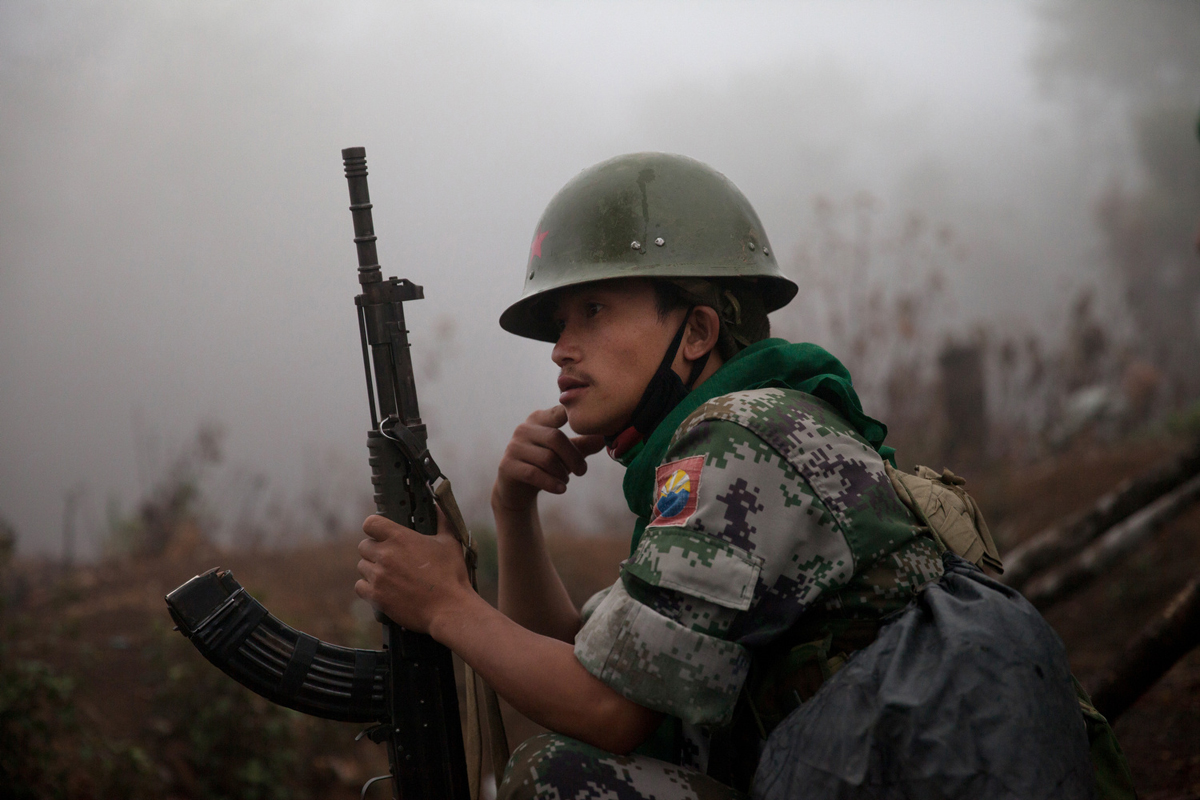Only recently released from the grip of a military junta, Burma (also known as Myanmar) is struggling to hold together its various ethnic and religious groups. In the country’s western Rakhine (Arakan) state, Rohingya Muslims are denied citizenship by the Buddhist-majority nation and face systematic discrimination and violence that the United Nations recently suggested might constitute “crimes against humanity.” And in Burma’s northernmost state, the predominantly Christian Kachin community has been subject to unlawful killings, forced labor, rape and torture by the Burmese army.
The roughly one million Kachin, who reside in a coveted territory that is rich in jade and timber and lined with lucrative Chinese-financed energy projects, say they are fighting to preserve their culture and natural resources from domination and exploitation by the Burmese government. In 1947, the Kachin signed the Panglong Agreement to join the Union of Burma in seeking independence from Great Britain. That agreement established in principle the autonomy of the Kachin and other ethnic groups that signed. But in 1961, responding to frustration that the Panglong Agreement had not been implemented and discrimination and inequality were on the rise, the Kachin Independence Organization (KIO) was formed to win independence for the ethnic minority. By the 1990s, the demands of the KIO and other armed ethnic organizations had shifted to the establishment of a federal union in Burma. Today the KIO is fighting for autonomy, including greater control of Kachin resources and territory, within Burma’s federal state system.
In June 2011 the Burmese army broke a 17-year-old truce with the KIO and fighting flared up again at a KIO strategic base near a Burmese-Chinese hydropower plant. The fierce conflict has caused untold casualties—since journalists are frequently prohibited from entering Kachin, numbers are difficult to ascertain—and displaced more than 100,000 civilians. Despite Burmese President Thein Sein’s directive to the military to stop its offensive against the Kachin, the army has continued to launch attacks. The premier’s peace negotiation team has met with the KIO, but unlike Thein Sein’s successful efforts at reaching ceasefire agreements with other ethnic minorities in recent years, his talks with the Kachin have failed to yield a truce.
Burma’s Kachin people remain under siege. The approximately 100,000 internally displaced Kachin have sought refuge in camps throughout Kachin state, northern Shan State and China. A food and health crisis is emerging, especially in remote areas. Cease-fire negotiations between the government and the KIO, as well as other armed ethnic organizations, are set to resume this month. The KIO hopes a nationwide cease-fire will not only end the armed conflict but will lay the groundwork for political dialogue to bring about lasting peace. After decades of authoritarianism and intermittent war, successful negotiations could open a path toward achieving the autonomy the Kachin community has sought for so long.
Patrick Pierce contributed reporting for this article.
This piece, commissioned by Creative Time Reports, has also been published by Foreign Policy.


